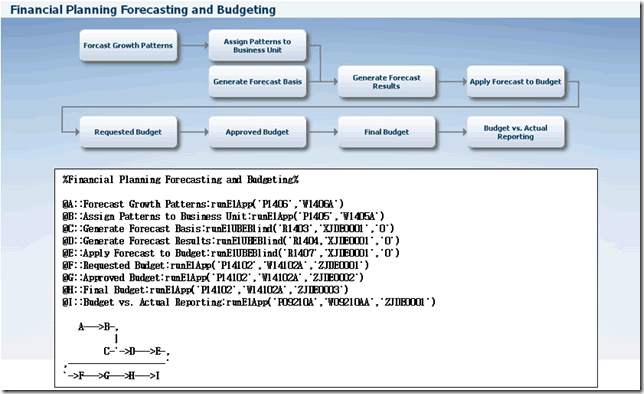E1 Pages: What Are They?
Share
What are E1 Pages?
From the Oracle documentation:
EnterpriseOne (E1) Pages are a mechanism for embedding HTML based content directly into E1. Content can include:
- Business Process Flows
- Other Task Based Navigation
- External URLs (e.g. www.oracle.com )
- Embedded links to BI Analytics Pages
- Corporate Branding
- Documentation
- Any Rich HTML Content
In short, they are a collection of HTML Pages which can be assigned to a user, role or *PUBLIC and effectively serve as a simpler version of a Portal Solution. Upon being published to a given user, these E1 Pages appear as a set of tabs to the user upon logging into EnterpriseOne.
Oracle Documentation:
https://support.oracle.com/epmos/faces/DocumentDisplay?id=1401833.1
https://support.oracle.com/epmos/faces/DocumentDisplay?id=1394280.1
Author
Stewart Schatz
Average Rating
One thought on “E1 Pages: What Are They?”
Leave a Reply Cancel reply
This site uses Akismet to reduce spam. Learn how your comment data is processed.
More Stories
How to Use the CMDKEY Command to Manage Stored Credentials on Windows
The cmdkey command is a Windows utility that lets you create, delete, and manage stored credentials for network authentication. This is particularly useful…
How to Print a Directory Structure Using PowerShell: Step-by-Step Guide
If you need to print out the directory structure and list the files within, this PowerShell script will help you...
Windows God Mode… What!?!
Windows God Mode is a hidden feature in the Windows operating system that allows users to access all of the system’s control panel options and settings in a single place.
How To Test A SQL Server Connection
There is an easy way to test your SQL Server connection when running Windows without any special software. I found...
4 Lines To Export Outlook Rules To Excel/CSV Using PowerShell
I used to use a ton of Outlook Rules to organize the thousands of emails that I receive each day....
Get The Size & Record Count Of All Tables In A SQL Server Database
Use the SQL query below to display the size and record count of all tables in an SQL Server database....


Very Good flat form to learn new/Advanced features in JD Edwards.